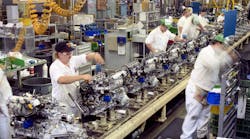The cost of safety in any plant can easily be calculated. The cost of an unsafe plant cannot be measured as easily.
A safe working environment is a fundamental right of every worker, and most managers understand the costs of safety programs, equipment and training. But there are other factors involved. A worker who feels safe on the job and empowered to point out places where safety can be improved will be more productive and better engaged with their work. And the reverse is true—workers know when their workplace is unsafe, and won’t risk their livelihood or their life.
Successful safety programs are both top-down and bottom-up processes. When workers see an investment in safety, they can do their job with confidence.
For safety professionals in industrial environments, the quest for a safer workplace is an ever-moving target. Safety systems must be in place to both protect against an unplanned event as well as to guard against human error.
As we look at safety systems in this ebook, we start with a look at an actual case study, and how to design out the hazards. Then we’ll look at specific systems: hard guards, interlock guards, e-stops, stop switches and safety rope pull switches—to explore how each factor into a safer plant, and how together they form the backbone of a full safety system.
